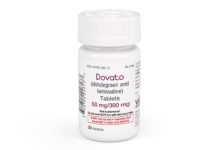29 June 2017 — Geneva, Switzerland — ICASO’s Executive Director, Mary Ann Torres, representing the organization at the 40th meeting of the UNAIDS Programme Coordinating Board, made an intervention during the thematic segment, entitled “HIV Prevention 2020: A Global Partnership for Delivery.” Mary Ann’s remarks, which were made during the panel “What is required for prevention scale-up?,” centered on the underachievement of prevention spending against UNAIDS-defined targets, specifically that one quarter of all money spent in the AIDS response be invested in prevention programs. She used the recent report from ICASO and EANNASO, “A Quarter for Prevention?” to illustrate her concerns. The full text of her intervention follows.
“We heard from the panelists about what the requirements for systematic and rapid scaling-up of combination prevention programmes are, including political commitment and investments in prevention. Let me focus on the latter one:
Globally, the target of investing “a quarter for prevention” is not being met.
Much of the focus on the Fast-Track agenda has centered on the first set of targets (90-90-90). While treatment scale-up is absolutely critical, we know that we will not end AIDS with treatment alone.
Under-spending on prevention hurts communities that face disproportionate rates of new infections, especially adolescent girls and young women, men who have sex with men, transgender people, sex workers, people who use drugs, indigenous people, and people in detention.
The Global Fund to Fight AIDS, Tuberculosis and Malaria is a major financier of African HIV responses and a vital source of prevention investments.
ICASO and EANNASO conducted research into Global Fund investments in HIV prevention interventions in the hardest hit countries in Africa.
Our central question was: is the Global Fund investing “a quarter for prevention?”
Of the 23 funding requests examined, an average of 16% of the total funding requested was for HIV prevention interventions. One country request was 3%.
Of the 15 signed grant agreements examined, an average of 15% of the total funding invested was dedicated to HIV prevention – slightly less than the 16% requested.
Our study shows that an average of just 3% of current Global Fund grants in these 15 African countries is spent on HIV prevention interventions for men who have sex with men, transgender people, sex workers and people who inject drugs.
Among the recommendations in our report, I would like to highlight two:
- Support, facilitate and perform community-led monitoring on HIV prevention budgets, for Global Fund, PEPFAR, government, and other funding streams. Having accurate, up-to-date and community-owned data on HIV prevention spending gaps is vital for effective advocacy.
- Advocate for the health and rights of key populations, including sex workers, MSM, transgender people, people who inject drugs, indigenous populations and prisoners. Criminalization and marginalization of these groups acts as a barrier to service delivery and access. This hampers the effective scale-up HIV prevention where it is needed the most.”


 ПОИСК ПО САЙТУ
ПОИСК ПО САЙТУ  поиск по ресурсному центру
поиск по ресурсному центру 



